Extreme summer heat affects everyone, but it is more threatening when you have a chronic illness including diabetes. “People with diabetes feel the heat more than people who do not have diabetes.” Reasons may include complications to blood vessels and nerves from high blood sugars, which can affect how much you perspire. If you don’t perspire correctly, your body will not cool itself down. This leads to overheating, heat cramps, heat exhaustion and possibly even heat stroke. Sometimes you just do not drink enough water because either you are not feeling thirsty or want to require an unfamiliar restroom. This can create dehydration.
High temperatures also change how your body uses insulin. Just being overweight or obese makes you retain more body heat. Hotter weather can affect how quickly pathogens grow and replicate making it easier to get food poisoning when serving and leaving food outdoors. BBQs and outdoor picnics in the hot summer season may limit the choices of food you should prepare.
According to the Cleveland Clinic, “people with diabetes are more likely to be admitted to the hospital for dehydration, heat exhaustion and heat stroke. They tend to have more complications and a higher death rate from heat exposure than those without diabetes”. According to the CDC, “more than 700 people die each year from extreme heat conditions in the United States”. The temperatures continue to rise earlier in the season and every year it continues to get hotter during the summer months.
Global Extreme Heat Waves
Deadly heat waves have been bearing down across the globe. The United Kingdom broke its record for highest documented temperature ever, registering over 104.5°F. France and Italy already noted an extreme temperature of 109°F. Even eastern Europe suffered from an extensive heat wave. Nearly 2,000 people have recently died in Spain and Portugal due to the oppressive heat. Over 28 US states are currently experiencing a heat wave and half of those states have temperatures in the 3 digits of over 100°F.
The most oppressive heat wave to hit the US occurred in Death Valley, California in 1913 with a temperature of 134°F. This summer, on June 17, 2022, Death Valley recorded a temperature of 128°F. Texas had the highest temperatures this summer in at least 9 of their major cities, along with Arizona and Nebraska. Huge wildfires are hitting California and the western states at higher levels and these above normal temperatures are expected to remain late into the fall. Many of us are ill-prepared for the excessive heat we are currently experiencing. Adding diabetes to the mix can make it life-threatening if you are not prepared.
What is humidity?
“Humidity is the amount of water vapor in the air.” The higher the amount of water vapor in the air, the higher the humidity. As the temperature rises, the air can hold more water vapors. Higher humidities make the air feel more wet. You tend to feel not only hot but sticky and uncomfortable. The eastern seaboard experiences the highest levels of humidity. Water vapor enters the air by evaporation of large bodies of water including lakes, oceans, rivers and seas.
What is the heat index?
“The heat index is what the temperature feels like to the human body when the relative humidity is combined with the air temperature.” Direct sunlight can raise the heat index by 13.5° of Fahrenheit. When the heat index is between 80-89°F, it feels unpleasant. If the heat index is 90°F or above, a serious heat-related condition can occur such as heat cramps, heat exhaustion and heat stroke are possible complications.
We need to maintain an internal body temperature within a narrow range of either a few degrees above or below 98.6°F. Heat illness occurs when the body can’t get rid of excess heat and cool down properly.
What are the symptoms of hypoglycemia verses heat illness? Do they feel similar?
Heat illnesses can have symptoms that are very similar to hypoglycemia or low blood sugar. “Heat illness is a serious medical condition resulting from the body’s inability to cope with a particular heat load.” Included are heat rash, heat cramps, heat syncope, heat exhaustion, and heat stroke.
The symptoms of hypoglycemia:
- Fast heartbeat
- Shaking
- Sweating
- Anxiety/nervousness
- Irritability
- Confusion
- Dizziness
- Hunger
- Blurry vision
- Unconsciousness
The symptoms of heat illness:
- Heavy sweating
- Painful muscle cramps
- Weakness/fatigue
- Nausea and vomiting
- Dizziness
- Headache
- Fainting
- Erratic behavior
- Fast and weak heartbeat
- Body temperature may be elevated
- Unconsciousness
Be sure you know which condition needs to be treated by testing blood sugars and staying properly hydrated. If you are dehydrated, you may also need to replace electrolytes along with drinking water. “Electrolytes are minerals that carry an electrical charge. They are needed for your health and survival.” Electrolytes are lost through urination and perspiration. They include sodium, bicarbonate, phosphate, chloride, potassium, calcium and magnesium.
Electrolytes are needed for proper muscle contraction, to build new tissue, to support hydration, keep your heart beating and transmit nerve signals. Find an electrolyte rich water, eat a mineral rich diet, cut up fruit and muddle it in your water or drop an electrolyte tablet or powder packet into your calorie-free drink. An electrolyte rich diet includes bananas, tomatoes, watermelon, spinach, kale, almonds, and peanuts. Avoid regular sport drinks which may have excess calories and sugar. Also test blood sugars frequently. Be prepared with fast acting sugar tablets or sugary drinks if blood sugars do drop and you have hypoglycemia.
What regulates your body temperature?
The hypothalamus in the brain regulates your body temperature. “Our body regulates temperatures of both hot and cold. However, our capacity to tolerate cold exceeds the body’s ability to adapt to the heat.” We regulate heat through perspiration which is the evaporation of sweat (our cooling process). When humidity rises, the rate of evaporation decreases, and your body can’t regulate its temperature. A healthy body functions best at an internal temperature of 98.6°F. Everyone does have their “normal” temperature which might be slightly higher or lower. Your hypothalamus checks your current temperature and compares it with the normal temperature of 98.6°F. If your temperature is too low the hypothalamus makes sure the body generates and maintains heat. If the temperature is too high, heat is given off and we sweat to cool our skin.
Factors that influence how you can “stand the heat” include:
-
Age
If you are over 65 or younger than 2, you produce less sweat per sweat gland. This makes it more difficult to regulate body temperature by making you retain extra heat, leading to a higher core temperature and greater risk of dehydration.
-
Obesity
Being overweight or obese increases the risk of heatstroke to 3.5 times more than an average weight person. Your ability to handle heat is decreased. An excess layer of subcutaneous fat acts as “a layer of insulation” making it difficult to regulate body temperature leading to a higher core temperature.
-
Summer viruses
Viral viruses including COVID and bacterial infections can cause a fever. Dehydration may occur rapidly which may lead to multiple problems.
-
Dehydration
Dehydration comes on quickly in the summer heat and humidity which makes you feel awful, sluggish and cranky. 60% of your body is water. Water is as important to your body as oxygen. You need water for your digestion, it hydrates your joints and helps them move, it helps you move waste out of your body, and it keeps your body temperature in check. Symptoms of dehydration which comes before heat illness may include heavy sweating, fast heartbeat, confusion, weakness, nausea and dark urine. It can be caused by many things including being in a hot car for an extended period of time, being in the direct summer sunlight for too long and exercising outdoors in the heat.
Dehydration can also be brought on from vomiting and severe diarrhea. You can tolerate a 3-4% loss of body water. After losing 5%, you may develop dizziness, headaches and fatigue. When you lose 10% of body water, you can experience confusion, seizures and decreased or lack of urination. This is extremely dangerous. You cannot pump enough water to your organs (heart, brain, kidneys and muscles). Dehydrated skin absorbs insulin slower. Warm skin causes insulin to be absorbed faster.
You can do a simple skin check to see if you are dehydrated. Pinch up your skin and let it go. If it takes more than a few seconds to “snap back” to its original place, you are dehydrated. Dehydration causes blood pressure to fall and stress hormones to pour into your blood stream. Cortisol, a stress hormone then causes your liver to release and raise your blood sugar. This becomes more dangerous when you have diabetes.
-
Anti-depressants, anti-psychotics (used for mental health)
These medications affect how you regulate your body temperature and may cause dehydration. Lithium, for bipolar disorder, would be included. Anyone can experience a higher amount of irritability and depression during heat and humidity. Also, there can be problems with sleep, memory, attention and reaction time during the hotter, summer months.
-
Other medications
Certain medications can affect how your body responds to heat and your body’s ability to stay hydrated. According to the National Institute on Aging, “All these medications make it hard for the body to cool off”. Antihistamines for allergies, beta blockers for heart problems, tranquilizers for anxiety and certain diabetes medications. Chronic use of laxatives for constipation or weight loss and chemotherapy also increase dehydration. Metformin, an oral diabetes pill, can cause severe diarrhea in certain people and possibly lead to dehydration. Another oral diabetes medication, called a SGLT-2 (examples include Farxiga, Invokana and Jardiance) cause you to urinate more. SGLT-2 medications pull glucose out of your bloodstream through your urine which may lead to dehydration.
-
Diabetes
Having diabetes can make you more prone to dehydration. Neuropathy or nerve damage can change the way you recognize heat and impair the blood vessels near the skin to open up. Elevated blood sugars affect the sweating response which may not allow you to cool off. High blood sugars also cause an increase in urination, leading to dehydration. Most of these problems are seen in uncontrolled diabetes.
-
Other chronic diseases
Crohn’s disease and irritable bowel disease (IBS), heart disease, lung disease, and/or kidney disease. Each of these conditions make it more difficult to regulate body core temperature during hot temperatures. Due to lower skin blood flow and poor sweating responses, it is difficult to regulate core temperature.
-
Eating hot & spicy foods
Hot & spicy foods – including chili peppers, jalapenos, raw onions and garlic, hot chicken wings, tabasco sauce, wasabi, spicy salsa, fried, fatty foods, foods high in carbohydrates and high in protein – can make you perspire more and are stimulants. Peppers contain capsaicin which triggers the nerves that make your body feel warmer. Your face flushes, your nose runs and your eyes water. A burning sensation spreads across your lips onto your tongue. A surge of blood rushes through your dilated blood vessels and your body temperature goes up. Since your core temperature is already higher due to the hotter weather, you will begin to perspire more just to cool down. Drinking extra water is important when eating spicy foods to replace fluids lost in sweat. Salty foods such as chips, processed foods, canned soups, condiments and luncheon meat can increase your need to drink water to avoid dehydration.
-
Peripheral arterial disease (PAD)
PAD (vascular deficits) cause blood flow issues. This makes it more difficult to cool down when temperatures and humidity are high. Lack of sweating can lead to overheating and heat stroke. PAD is often seen in people with diabetes.
-
Sunburn
Sunburn can raise both body temperatures and blood sugars. It is a common skin injury which creates an inflammatory response. It affects how your body should cool itself off.
-
Alcohol use
Summertime cocktails are common but could lead to heat tolerance problems. Alcohol as well as caffeine can dehydrate you making it more difficult to regulate body temperature. Alcohol slows down the hypothalamus, which makes the body think it is even hotter and causes you to perspire more profusely – leading to dehydration.
What can help you beat the heat?
- Stay in the shade. If you must be outside during the extreme heat, try to stay in the shade. Use an umbrella or a hat to protect and cover your head. Direct sunlight does increase the heat index by quite a bit.
- Draw shades and curtains in your home.
- Window tint the windows in your car and home.
- Impact glass helps keep the heat out.
- Better insulation keeps the home cooler in the summer and warmer in the winter.
- Use ceiling fans in addition to air conditioning.
- Re-caulk the windows to avoid heat leaking into your home.
- Use decorative shutters to provide shade which will lower the temperature and offer storm protection.
- Plant big shady trees on the west or south side of your home.
-
Dress for coolness
White clothes reflect heat instead of absorbing it. Dark colors, including black absorb the sun’s rays and makes you feel warmer. Wear loss fitting clothes. Avoid tight waist bands or belts. Loss fitting items allow more air close to your body and increase circulation along with speeding up evaporation. Avoid heavy fabrics such as knits, wool or polyester; they do not allow your skin to breathe, especially when it is hot. Perspiration can get trapped and prevent it from evaporating, making you feel even hotter. Cotton and linen are better than synthetics, acrylic or nylon, for keeping you cool. Look into UPF treated shirts, pants, dresses, hats and swimsuits; UPF clothing blocks both UVA and UVB rays. UPF of 30-49 offers good protection but UPF 50+ is excellent, according to the Skin Cancer Foundation.
-
Use your accessories
Sunglasses help protect the sensitive skin around your eyes. Wearing sunglasses also helps reduce the risk of cataracts, more common with diabetes. Wear full hats over visors. A visor is better than no head covering but a full hat with a wide brim is the best option. A hat will help keep both your head and face cooler and protected. The hat should have SPF or UPF in the fabric, should feel soft, packable and made from both a light weight and light color fabric. Vents on the hat offers more protection since it allows for air circulation.
Cover your feet. If blood sugars are out of control, open sandals, flip flops and plastic Crocs are only slightly safer than going barefoot. You could step on glass, broken shells, metal, a nail, a tree branch or anything that might cause an injury. Walking barefoot in the heat is dangerous. Neuropathy or nerve damage may prevent you from feeling any discomfort or pain. Hot pavement or hot sand can create skin damage, an open wound and then an infection. Closed rubber water shoes are your best option for the beach. Plastic Crocs make your feet perspire and can raise the risk of tripping and falling. A sturdy laced shoe with a rubber bottom, along with cotton/synthetic blend socks, are the best combination for safety when you are walking.
- Never leave anything in your hot car. This includes medications, diabetes supplies, food that can spoil, water in plastic bottles or you.
- Have a backup plan in case your AC breaks down or if the electricity goes off. Some cities randomly turn off the electricity during the hot summer months to save power.
- Have an emergency bag ready to go if you have to leave in a hurry.
- If you perspire profusely, talk to your physician about electrolyte replacements.
-
Drink, drink and then drink
Yes you can over drink even water, but not usually if you are just sipping cool water during the summer months. Avoid sugary power drinks like Gatorade or Powerade, sodas or fruit juices. These are not good choices. Drink alcohol in small amounts, if you do drink, since it can dehydrate you. Caffeinated drinks may also cause dehydration, so enjoy them in moderation. Try different flavored waters that are sugar and calorie free. Take sips frequently instead of “downing a drink” quickly which may cause bloating. Make your own lemonade with Stevia, lemons, and water. Drink even when you are not thirsty.
- Snacks and lunch foods should be easy to carry and enjoy. Keep things simple with foods that do not spoil and do not require cooking. Use a toaster oven to cook food or a microwave to heat food instead of using your regular oven which will heat the entire kitchen. Fresh fruits such as watermelon, cantaloupe and grapefruit have a high-water content making it refreshing and giving you extra fluid. Watermelon eaten in portion size has a high amount of potassium and will help prevent muscle cramping. Cantaloupe is 90% water, is high in vitamin C and high in fiber. Cucumbers are high in water content and can be sliced and easily carried. Celery sticks are high in water.Boil eggs – but skip the mayonnaise – if you are bringing them to the beach or park. Eat them whole with a mustard-based dip when they cool down. Make your own veggie chips the night before – zucchini, spinach, or kale chips – by baking them with olive oil and a drop of sea salt for 10 minutes at 350°F. If you do choose the hamburger at the concession – stick to the simplest one. Add a slice of tomato, lettuce, and cheese. Avoid the special creamy sauces or fried onions as an addition. See if a veggie or turkey burger is available. Order the shrimp cocktail instead of the fried shrimp.
- Plan outdoor activities early in the morning or late in the afternoon to avoid extreme heat and direct sunshine.
- If not wearing SPF or UPF clothing, then use sunscreen. Even with waterproof sunscreen you should reapply after getting wet or doing strenuous exercise. According to the FDA, “Use a SPF – broad spectrum (protects against UVA/UVB) 15 or higher, even on cloudy days.” Use sunscreen on all uncovered skin. Apply to your face, nose, ears, shoulders, back, back of legs, knees and lips. Use a spray-on or stick for easy application. Apply 30 minutes before going outdoors. Look at expiration dates and do not keep it summer after summer and expect it to work properly.
- Heat illness is preventable, but if you do feel like you are suffering from a heat related illness (heat rash, heat cramps or heat exhaustion – not heat stroke), go inside to the AC, when possible. At least stand under a fan or go to the shade. Apply cool water to key points on the body – wrists, neck, chest, and temples. Put cool water where the veins run close to the surface. Use ice packs if they are available. Slowly sip cool water. Remove excess clothing and loosen clothing when possible. Stay still.
-
Heat stroke
When heat stroke is suspected – a temperature of 103°F or more, confusion, red, hot, damp or dry skin or loss of consciousness – call 9-1-1. This may require blood tests, a urine specimen as well as IV fluids. Do not offer fluids to someone who has heat stroke and is disoriented or confused since they may choke or aspirate.
- Treat sunburn immediately so you do not suffer with a serious open skin infection. Aloe vera gel kept in the refrigerator tends to be soothing.
-
Pumps and sensors
There are new and wonderful adhesives to keep devices in place, but water and perspiration may still present a challenge. Tegaderm is even strong holding when exposed to moisture.
- Do not take a vacation from your diabetes management – even during the summer heat. Check blood sugars more frequently, stay out of the direct sun, stay hydrated and of course, enjoy yourself. You may be surprised to find your blood sugar numbers are higher or lower, because of the heat and humidity. Drink before you become thirsty, take tepid showers, and sip cool sugar free liquids often. Check on friends and neighbors to make sure they are ok. Get use to the heat by slowly acclimating to it; build up your time outside gradually, 15-20 minutes to start. Know which and where medical services are available if you do have a heat related illness.
Enjoy the rest of your summer!
References
- https://www.nytimes.com/1983/09/21/garden/eating-spicy-food-what-are-the-effects.html
- https://www.cdc.gov/aging/emergency-preparedness/older-adults-extreme-heat/index.html
- https://www.diabetesselfmanagement.com/healthy-living/general-health/six-ways-to-stay-cool-when-the-temperature-soars/
- https://www.diabetesselfmanagement.com/blog/summertime-hazardous-for-people-with-diabetes/
- https://www.piedmont.org/living-better/change-in-temperature-can-affect-blood-sugar-levels
- http://www.insulin-pumpers.org/howto/tapetips.shtml
- https://www.treehugger.com/overlooked-low-tech-ways-of-keeping-your-home-cool-4858516
- https://www.nbcnews.com/politics/heat-waves-kill-thousands-bidens-office-climate-health-risks-broke-rcna39068
- https://www.everydayhealth.com/public-health/how-to-keep-yourself-and-loved-ones-safe-as-heat-waves-scorch-the-country/
- https://www.everydayhealth.com/diet-nutrition/top-hydrating-fruits/?slot=O&eh-uid=80037022
- https://www.weather.gov/ama/heatindex
- https://www.mayoclinic.org/diseases-conditions/heat-exhaustion/symptoms-causes/syc-20373250
- https://www.ncbi.nlm.nih.gov/pmc/articles/PMC2900329/
- https://www.cdc.gov/diabetes/library/features/manage-diabetes-heat.html
- https://www.healthline.com/health/fitness-nutrition/electrolytes-food


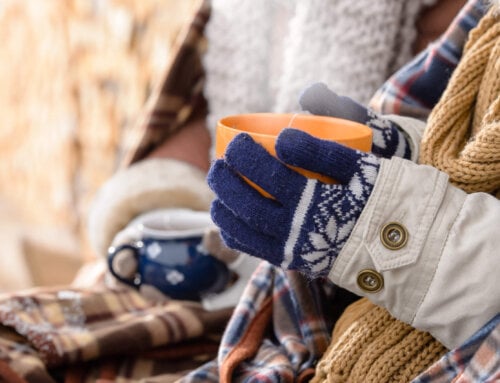

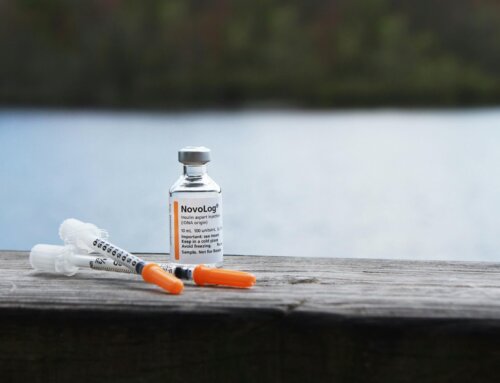
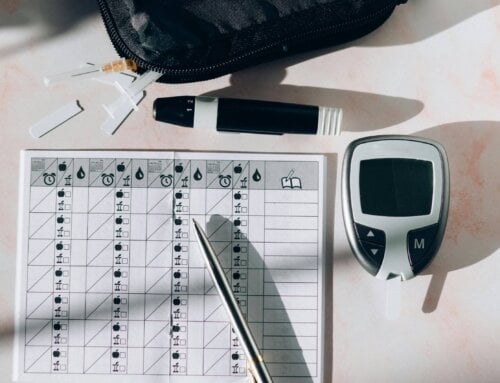


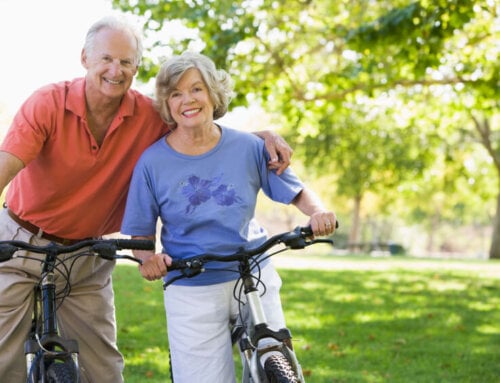
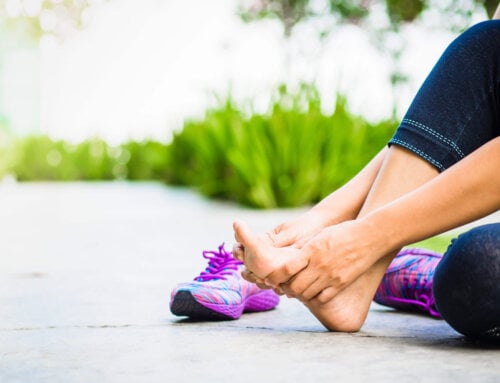

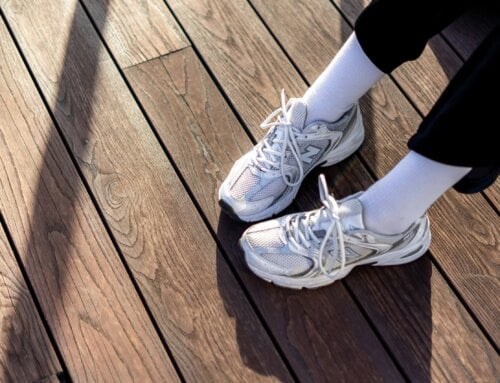
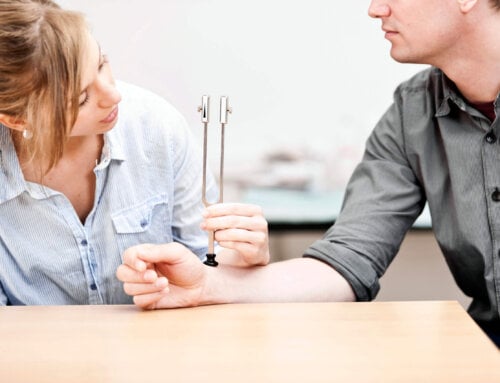
Leave A Comment